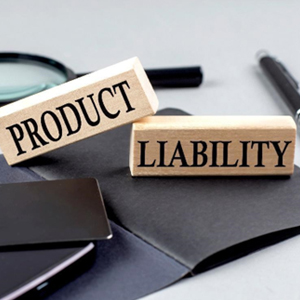
In this article, you can discover:
- The fundamental differences between negligence and strict liability in product cases.
- How misrepresentation is defined and proven in California’s product liability claims.
- Effective strategies to counter insurance defenses in defective product settlements.
How Is Negligence Different From Strict Liability In A Product Liability Case?
Negligence and strict liability are distinct legal concepts in the realm of liability. Strict liability holds a party within the chain of distribution responsible, regardless of any duty or knowledge of potential risks. Strict liability is based on the idea that those in the chain, such as sellers or manufacturers, are best positioned to identify and mitigate dangers.
On the other hand, a negligence claim requires the plaintiff to demonstrate that the seller or manufacturer’s actions fell below an established standard of care. This involves proving that the standard of care in the industry was not met, such as failing to ensure adequate warnings that align with industry norms.
If such standards are not adhered to, it can lead to a breach under a negligence theory. This distinction is crucial, as negligence and strict liability both have different recovery options and require different types of evidence.
How Is Misrepresentation Defined And Established In A Defective Product Liability Case In California?
Have you ever purchased a product that didn’t perform as expected or, worse, put you in danger? In California, this situation might fall under ‘misrepresentation’ in a product liability case.
This happens when a product fails to meet the safety expectations of an ordinary user. Imagine buying a car seat that isn’t as safe as you’d expect, or a power tool that lacks crucial safety features. These are examples where a product doesn’t live up to its promises.
California law holds manufacturers accountable for not warning you about these dangers, considering it a form of misrepresentation. To win a case based on misrepresentation, you’ll need to prove that the seller knew about these flaws and didn’t warn you, leading you to believe the product was safer than it actually was.
What Strategies Do Insurance Companies Use To Challenge Defective Product Claims In California?
Facing an insurance company in a defective product case can feel like a David vs. Goliath situation. They have a few common tactics to watch out for. One is the ‘statute of limitations,’ where they argue that you’ve waited too long to file your claim.
Then there’s the ‘state of the art’ defense, where they claim the product was top-notch based on current standards, suggesting it couldn’t possibly be defective. Another one is blaming you for misusing the product. However, if a misuse was something any reasonable person could foresee, this argument might not stand in a California court.
They might also try to shift the blame to your employer for not training you properly or to the makers of individual parts of the product. Understanding these tactics is crucial to preparing a strong counter-strategy and ensuring you get the justice and compensation you deserve.
What Do I Need To Look For When Researching And Hiring An Experienced Product Liability Attorney In California?
Selecting the right product liability attorney in California involves several critical considerations. Experience in product liability, a deep understanding of the law, and a passion for advocacy are essential qualities.
Given the influx of products into the United States through California, it’s important to find a lawyer who can handle cases even if the injury occurred outside California. The attorney should be capable of meticulously evaluating your case, determining the appropriate parties to sue, and deciding the most effective course of action.
It’s crucial to find a lawyer who prioritizes your interests, balancing the desire to go to trial with the practicality of settling when it best serves your needs. The attorney’s approach should be client-centered, focusing on what is most beneficial for you and your family. Additionally, consider the lawyer’s fee structure and whether it aligns with your financial situation.
The attorney’s connections with experts and their ability to secure the right expertise for your case are also vital factors. Ultimately, the choice should be based on a combination of professional competence, personal compatibility, and a shared commitment to achieving the best possible outcome in your case. For more information on Establishing Negligence In A Product Liability Claim, an initial consultation is your next best step.
Get Your Questions Answered. Call For Your
Free 30 Min Evaluation Today! (310) 982-2291